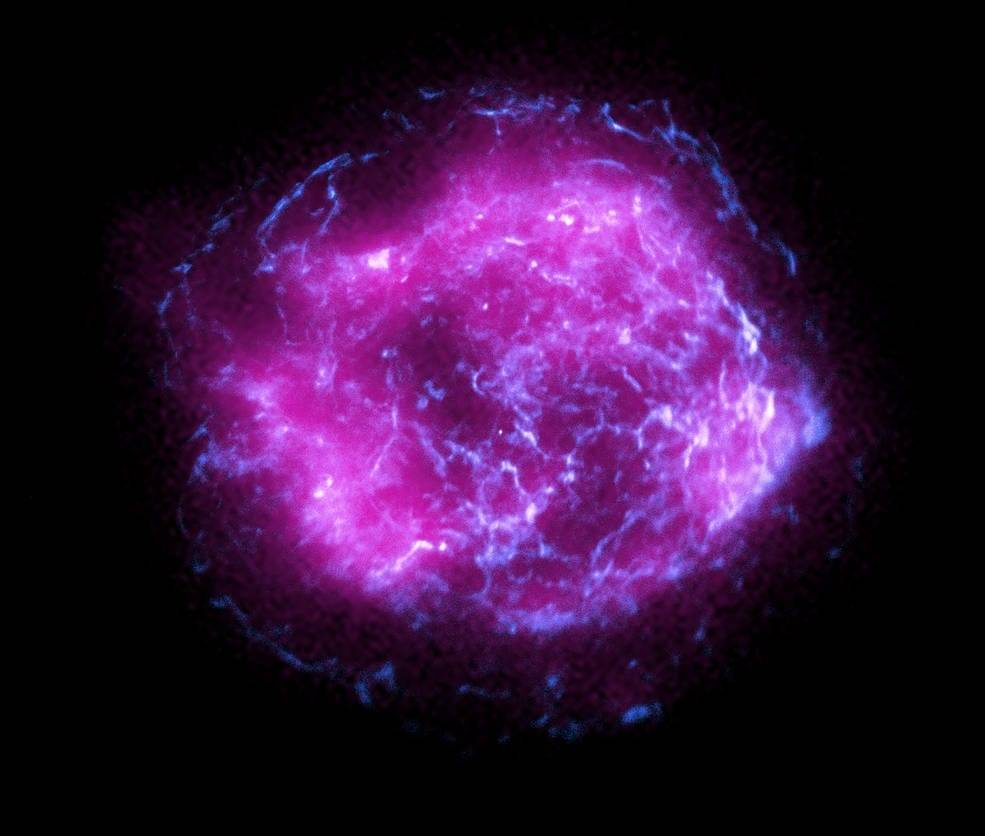Chandra and IXPE, with different kinds of detectors, capture different levels of angular resolution, or sharpness…reports Asian Lite News
US space agency NASA has released the first science images from its new Imaging X-ray Polarimetry Explorer — IXPE — that was launched on December 9, 2021.
NASA said that all instruments are functioning well aboard the observatory, which is on a quest to study some of the most mysterious and extreme objects in the universe.
“IXPE first focused its X-ray eyes on Cassiopeia A, an object consisting of the remains of a star that exploded in the 17th century,” the space agency said in a statement.
“The shock waves from the explosion have swept up surrounding gas, heating it to high temperatures and accelerating cosmic ray particles to make a cloud that glows in X-ray light. Other telescopes have studied Cassiopeia A before, but IXPE will allow researchers to examine it in a new way,” it added.
In an image released by NASA, the saturation of the magenta colour corresponds to the intensity of X-ray light observed by IXPE. It overlays high energy X-ray data, shown in blue, from NASA’s Chandra X-Ray Observatory.
Chandra and IXPE, with different kinds of detectors, capture different levels of angular resolution, or sharpness.
A key measurement that scientists will make with IXPE is called polarisation, a way of looking at how X-ray light is oriented as it travels through space. The polarisation of light contains clues to the environment where the light originated.
IXPE’s instruments also measure the energy, the time of arrival, and the position in the sky of the X-rays from cosmic sources.
“The IXPE image of Cassiopeia A is bellissima, and we look forward to analysing the polarimetry data to learn even more about this supernova remnant,” said Paolo Soffitta, the Italian principal investigator for IXPE at the National Institute of Astrophysics (INAF) in Rome.
With polarisation data from Cassiopeia A, IXPE will allow scientists to see, for the first time, how the amount of polarization varies across the supernova remnant, which is about 10 light-years in diameter.
Researchers are currently working with the data to create the first-ever X-ray polarization map of the object. This will reveal new clues about how X-rays are produced at Cassiopeia A.
IXPE launched on a Falcon 9 rocket from Cape Canaveral and now orbits 370 miles (600 kilometres) above Earth’s equator. The mission is a collaboration between NASA and the Italian Space Agency with partners and science collaborators in 12 countries. Ball Aerospace, headquartered in Broomfield, Colorado, manages spacecraft operations.
ALSO READ-AstraZeneca opens research centre as UK builds science hub













